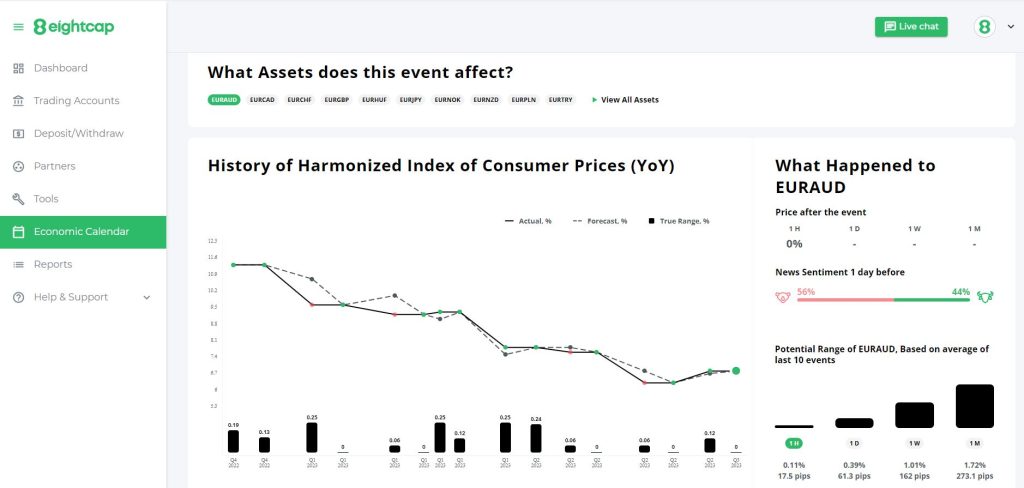Building an Effective Trading Strategy in CFD Trading: A Step-by-Step Guide
CFD (Contract for Difference) trading has gained significant popularity among traders due to its potential for high returns and flexibility in a high-risk environment. However, success in CFD trading often relies on the implementation of a well-defined trading strategy. A trading strategy provides a structured approach to decision-making, reducing emotional biases and enhancing the potential for consistent profitability. In this article, we will outline a step-by-step guide to help you build an effective trading strategy for CFD trading.
Step 1: Define Your Trading Goals and Risk Tolerance
Before diving into the intricacies of building a trading strategy, it’s crucial to establish clear trading goals and understand your risk tolerance. Determine whether you aim for short-term gains or long-term growth and define your acceptable level of risk. This step sets the foundation for the subsequent strategy development.

Below you will find more detailed explanation of this step along with some examples:
Determine Your Trading Goals:
Start by clarifying what you want to achieve through your CFD trading activities. Are you aiming for short-term profits or long-term growth? Do you have a specific financial target in mind? Are you looking to generate supplemental income or replace your current job? Defining your trading goals will help you establish a clear focus and guide your decision-making process.
Assess Your Risk Tolerance:
Risk tolerance refers to your ability and willingness to withstand potential losses in pursuit of higher returns. Understanding your risk tolerance is crucial to determine the appropriate level of risk you are comfortable with in your trading activities. Factors that influence risk tolerance include your financial situation, time horizon, and emotional capacity to handle market fluctuations.
Set Capital Allocation:
Determine the amount of capital you are willing to allocate for CFD trading. This involves assessing your financial situation, obligations, and the amount of money you can afford to risk without adversely affecting your overall financial well-being. It is generally recommended to avoid trading with funds that are crucial for essential expenses or emergencies.
Define Time Commitment:
Consider the amount of time you can dedicate to trading activities. Depending on your availability, you can choose between active day trading or longer-term position trading. Assess whether you prefer spending hours analyzing the markets each day or if you have a more limited time frame for trading.
Example: Lisa works full-time and can only dedicate a couple of hours each day to trading. She decides that swing trading, which involves holding positions for a few days to weeks, aligns well with her time commitment.
Step 2: Conduct Thorough Market Research
To build a robust trading strategy, you must develop a deep understanding of the underlying assets you plan to trade. Research the markets, including their historical performance, key influencers, and any upcoming events that may impact prices. Stay updated with economic indicators, company reports, and news releases to identify potential trading opportunities and risks.
Step 3: Identify and Analyze Trading Instruments
Once you have chosen your preferred trading platform, identify the CFD instruments that align with your trading goals. Evaluate various asset classes, such as stocks, commodities, currencies, or indices, and narrow down your focus to a few instruments. Perform technical and fundamental analysis to identify patterns, trends, and market dynamics that can help predict future price movements.
Evaluate Different Asset Classes:
CFDs offer a wide range of tradable assets, including stocks, commodities, currencies, indices, and more. Evaluate the characteristics and dynamics of each asset class to determine which ones align with your trading goals and strategy. Consider factors such as volatility, liquidity, and correlation to other markets.
Perform Technical Analysis:
Technical analysis involves studying price charts, patterns, and indicators to identify potential entry and exit points. Utilize various technical analysis tools such as trend lines, support and resistance levels, moving averages, and oscillators to analyze price movements. Identify patterns or signals that indicate potential buying or selling opportunities.
Conduct Fundamental Analysis:
Fundamental analysis involves evaluating the underlying factors that can influence the value of an asset. This includes analyzing economic indicators, company financials, news releases, and geopolitical events that may impact prices. Assess factors such as earnings reports, interest rates, economic growth, or geopolitical tensions to gain insights into potential market movements.
Monitor Market News and Events:
Stay updated with market news and events that can impact the instruments you trade. Follow economic calendars, news outlets, and industry-specific sources to identify upcoming events or announcements that may cause significant price movements. This awareness allows you to adjust your trading strategy accordingly.

Step 4: Develop Entry and Exit Strategies
A well-defined entry and exit strategy is essential for successful CFD trading. Determine the conditions that signal a suitable entry point, such as specific chart patterns, technical indicators, or fundamental factors. Similarly, establish criteria for exit points, including profit targets, stop-loss levels, or trailing stops. These predefined rules will help you make rational decisions and manage risk effectively.
Here’s a more detailed explanation of this step along with some examples:
Identify Entry Signals:
Determine the conditions or signals that indicate a favorable entry point for a trade. These signals can be based on technical indicators, chart patterns, or fundamental factors. Look for patterns such as breakouts, trend reversals, or specific indicator crossovers that suggest a potential trading opportunity.
Set Stop-Loss Orders:
Implementing stop-loss orders is essential to manage risk and protect yourself from significant losses. A stop-loss order is an order placed with your broker to automatically exit a trade if the price reaches a specified level. Determine the maximum amount of loss you are willing to tolerate for each trade and set your stop-loss accordingly.
Define Profit Targets:
Establish profit targets that indicate when you will exit a trade to secure profits. Profit targets can be based on price levels, technical indicators, or predefined percentage gains. Determine a realistic target that aligns with your risk-reward ratio and trading objectives.
Example: John sets a profit target of 10% for each trade he enters. When the trade reaches a 10% gain, he automatically exits the position to lock in his profits.
Consider Trailing Stops:
Trailing stops allow you to protect and maximize profits by adjusting the stop-loss level as the trade moves in your favor. As the price increases, the trailing stop automatically adjusts to a specified percentage or price distance below the highest price reached. This allows you to capture more profits if the price continues to move in your favor while protecting against significant reversals.
Example: Sarah sets a trailing stop of 5% on her trades. If the trade moves in her favor and reaches a 5% gain, the trailing stop adjusts to 5% below the highest price reached. This allows her to lock in profits and protect against potential reversals.
Step 5: Implement Risk Management Techniques
Risk management is a critical aspect of any trading strategy. Set a maximum percentage of your trading capital to risk on any single trade to prevent significant losses. Utilize position sizing techniques, such as the Kelly criterion or fixed fractional position sizing, to determine the appropriate position size based on your risk tolerance and trading system’s win-loss ratio.
Step 6: Back-test and Optimize Your Strategy
Before executing your strategy in live markets, back-test it using historical data to evaluate its performance. This process helps identify strengths and weaknesses, refine trading parameters, and optimize the strategy. Adjust indicators, time frames, or entry/exit rules as needed, keeping in mind that past performance may not guarantee future results.
Here’s a more detailed explanation of this step along with some examples:
Determine Risk per Trade:
Decide the maximum percentage of your trading capital that you are willing to risk on any single trade. This percentage should be based on your risk tolerance and take into account the potential volatility and market conditions. Generally, it is recommended to risk a small portion of your capital, such as 1% to 3%, per trade.
Example: David has a trading capital of $10,000 and decides to risk a maximum of 2% ($200) on each trade he takes. This ensures that even if he experiences a series of consecutive losses, the impact on his overall capital is limited.
Utilize Position Sizing Techniques:
Position sizing helps determine the appropriate size of each trade based on your risk per trade and the specific characteristics of the trade setup. There are different position sizing techniques you can use, such as the Kelly criterion or fixed fractional position sizing. These techniques take into account factors like the win-loss ratio of your trading system and the distance to your stop-loss level.
Example: Sarah’s trading system has a historical win-loss ratio of 60%. Based on the Kelly criterion, she calculates her position size to be 2% of her trading capital. So, for each trade, she adjusts the size based on the distance to her stop-loss level and her 2% risk per trade.
Use Stop-Loss Orders:
Implementing stop-loss orders is essential to limit potential losses and protect your capital. A stop-loss order is placed with your broker and automatically triggers an exit from the trade if the price reaches a specified level. By setting a stop-loss, you define the maximum amount you are willing to lose on a trade.
Consider Take-Profit Orders:
Take-profit orders allow you to secure profits by automatically exiting a trade when it reaches a specific target price. By setting a take-profit order, you ensure that you capture potential gains and avoid being influenced by emotions or greed.
Regularly Review and Adjust Risk Management Parameters:
It is crucial to regularly review and evaluate your risk management parameters to ensure they align with your trading performance and market conditions. Adjust your position sizing, risk per trade, and stop-loss levels as necessary based on your trading results and ongoing assessment of risk.
Example: John reviews his trading performance over a specific period and realizes that his risk per trade is consistently too high, resulting in larger losses. He decides to adjust his risk per trade from 2% to 1% to better align with his risk tolerance and protect his capital.
Step 7: Monitor and Evaluate Your Strategy
Once your strategy is live, continuously monitor its performance and adapt to changing market conditions. Keep a trading journal to record your trades, including reasons for entry and exit, emotions experienced, and lessons learned. Regularly review your journal to identify patterns or areas for improvement, ensuring that your strategy remains effective over time.

Building a successful trading strategy in CFD trading requires careful planning, research, and ongoing evaluation. By defining clear goals, conducting thorough market research, choosing the right platform and broker, and implementing risk management techniques, you can create a robust framework for trading CFDs. Remember to adapt and refine your strategy as needed and never stop learning from both successes and failures. With dedication, discipline, and a well-executed trading strategy, you can increase your chances of achieving consistent profitability in CFD trading, but always keep in mind that this is still a high-risk environment, and caution and proper awareness are a must.
* The information provided here has been prepared by Eightcap’s team of analysts. All expressions of opinion are subject to change without notice. Any opinions made may be personal to the author and do not reflect the opinions of Eightcap.
In addition to the disclaimer on our website, the material on this page does not contain a record of our trading prices, or represent an offer or solicitation for a transaction in any financial instrument. Eightcap accepts no responsibility for any use that may be made of these comments and for any consequences that result. No representation or warranty is given as to the accuracy or completeness of this information. Consequently, any person acting on it does so entirely at their own risk. Any research provided does not have regard to the specific investment objectives, financial situation and needs of any specific person who may receive it. It has not been prepared in accordance with legal requirements designed to promote the independence of investment research and as such is considered to be a marketing communication.
Please note that past performance is not a guarantee or prediction of future performance. This communication must not be reproduced or further distributed without prior permission.


